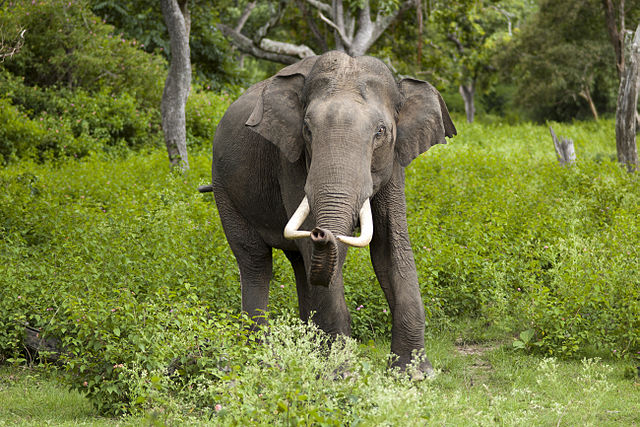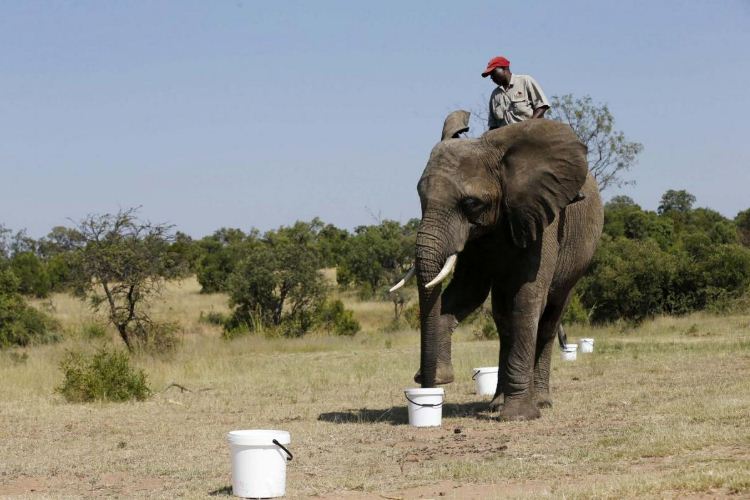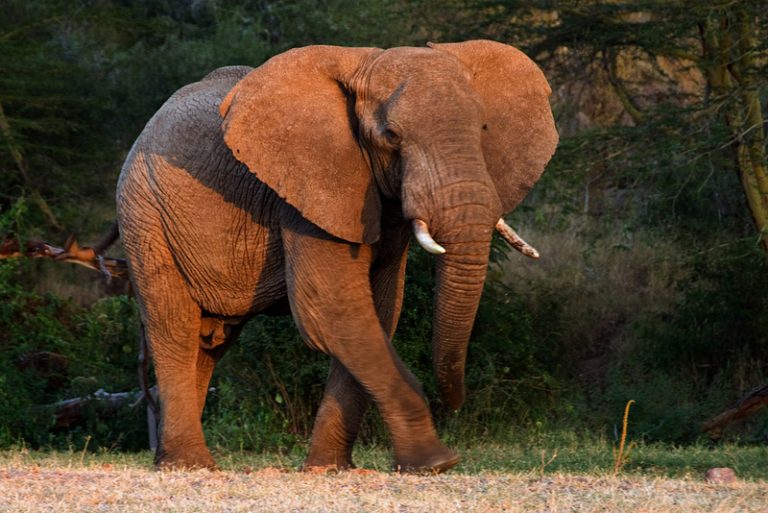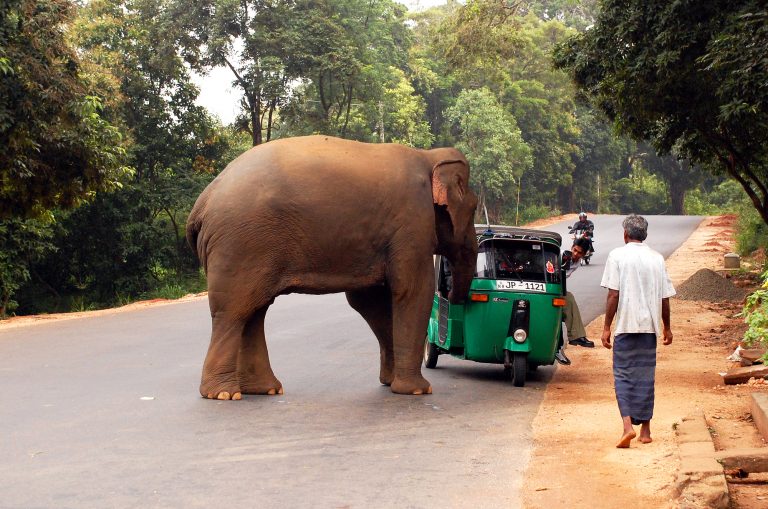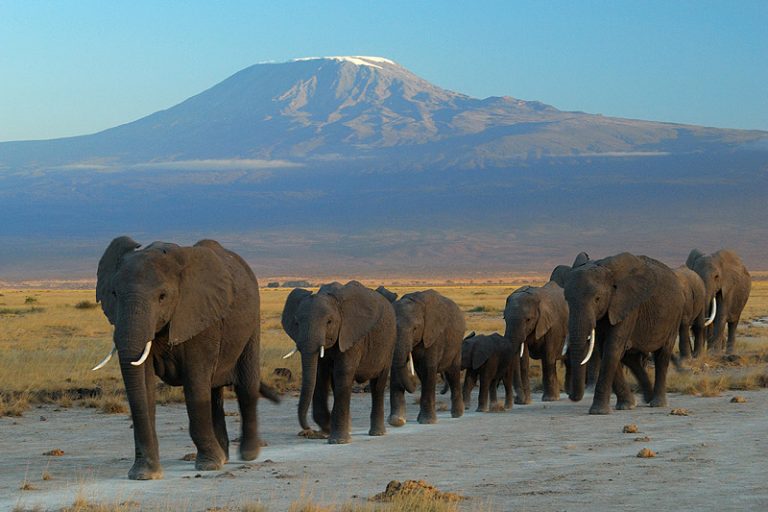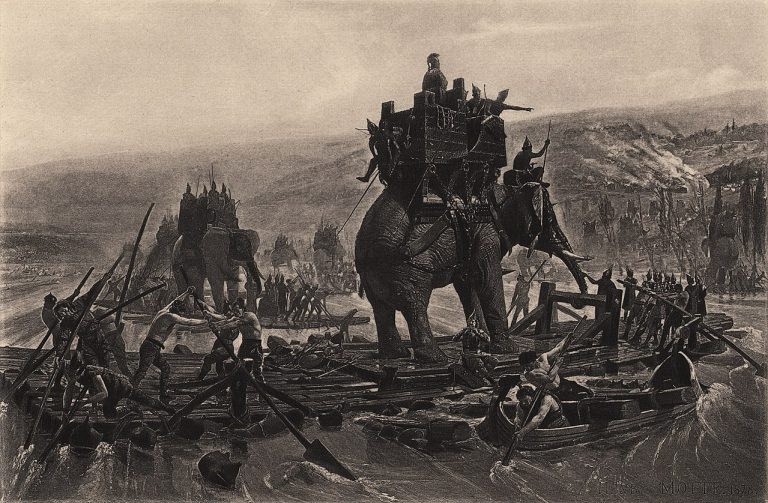Species Profile: The Asian Elephant
The Asian elephant is the largest living land animal in Asia.
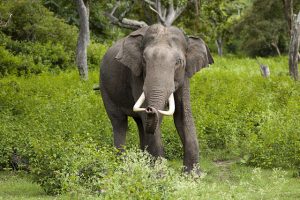
The Asian elephant, or Asiatic elephant, is the largest living land animal in Asia. There are three recognized subspecies of this elephant: Elephas maximus maximus (Sri Lanka), Elephas maximus indicus (Mainland Asia), and Elephas maximus sumatranus (Sumatra).
The Asian Elephant is generally smaller than the African elephant. Its body is gray and it has small ears. Elephants of this species also have very thick skin: over 1 inch thick on some parts of their body. The males of the species have large tusks sometimes measuring up to 5 or 6 feet long. Though, some males do not have tusks at all.
To date, Asian elephants suffer greatly from human activities like loss of habitat, poaching for their tusks, and degradation.
Within a 75-year span, they have lost at least 50 percent of their numbers. Some subspecies are already extinct.
1) Scientific Name
Elephas maximus
2) Scientific Classification:
- Kingdom: Animalia
- Phylum: Chordata
- Class: Mammalia
- Order: Proboscidae
- Family: Elephantidae
- Genus: Elephus
3) Life Expectancy
That actually depends on their environment. For instance, in their natural to semi-natural environments, female captive elephants can live for more than 60 years. But in zoos they die much faster. Males don’t live as long as females.
4) Average/Maximum Length And Height
The male Asian elephant is typically larger than the female.
Male Height/Length: Average shoulder height of males is 2.75 meters (9.0 feet). Body length including the trunk is 5.5 to 6.5 meters (18 to 21 feet) and the tail alone measures about 1.2 to 1.5 meters (3.9 to 4.9 feet) long.
Female Height: Average shoulder height is 2.4 m (7.9 feet).
The largest recorded individual was a specimen shot in the Garo Hills of Assam, India in 1924 by the then Maharajah of Susang. It was a bull Asian elephant and it stood at 3.43 meters (11.3 feet).
5) Average/Maximum Weight
The largest elephant of this species weighed 7 tons. Others average from 2.7 tons (female) to 4 tons (males).
6) Maximum Running Speed
Elephants generally swim well, but they can’t jump, or gallop. However, they can move quite fast at speeds of about 15 to 20 m/h (24 to 32 km/h).
7) Interaction With/Danger To Humans
-
Interaction with humans
Humans domesticate and use elephants for various tasks and it’s been that way for a long time now. Because elephants are so intelligent, people teach them to perform complex tasks and tricks.
Historical records show that soldiers used the Asian elephant during wartime. They were also used as beasts of burden and as a status symbol. Today, natives in many parts of Asia use them mostly to carry heavy loads especially in the timber logging industry, and for bearing luggage during forest safaris.
-
Danger to humans
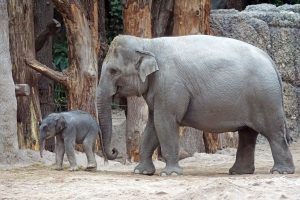
Female Asian Elephant With A Calf
Ordinarily, the Asian elephant will turn away from humans rather than attack. But, females with calves are particularly dangerous to approach. However, there are a few solitary cases of rogue elephants attacking and killing people.
So far, there is only one recorded case of an elephant actually killing people then eating the flesh of the deceased.
Apparently, this elephant was a rogue female that went on a rampage to avenge the death of her calf at the hands of humans.
They may also block roads and make it impossible for vehicles to pass.
8) Reproduction Details
Mating starts when the females are in oestrous (heat), and the bulls will fight one another for the chance to mate with the females.
Gestation period is 18 to 22 months, and like other mammals, they give birth to live young. Female have just one calf per birth but twins may occur very rarely. Newborn calves weigh about 100 kg (220 lbs.), and they are nursed for almost three years. A female will not breed again till the calf is weaned. As a result, the Asian elephant has an extremely low birth (about one calf every four or five years).
Both gender of Asiatic elephants reach adulthood at 17 years old.
9) Diet Of The Asian Elephant
The Asian elephant is a mega-herbivore. It consumes up to 150 kg (330 lbs.) of plants daily.
They prefer to eat a variety of plant species like legumes, palm, sedge and plants of the true grass families. These animals can’t stay far away from a water source and they must have enough of it for bathing and drinking.
10) Population And Conservation Status
The Elephas maximus is listed as Endangered by the International Union for Conservation of Nature (IUCN) since 1986. Human activities like poaching and habitat degradation caused their population to decline by about 50 percent within a 75 year period.
By 2003, their population in the wild was estimated at between 41,410 and 52,345 individuals.
11) Ancestry And History
The genus Elephas has its roots in Sub-Saharan Africa during the Pliocene Epoch (5.3 to 2.6 million years ago). Its ancestors spread all over Africa before migrating into south Asia.
The three main subspecies are closely related in features but a fourth subspecies was later discovered with its own unique features: the Borneo elephant. The Borneo elephant (Elephas maximus borneensis) is native to northern Borneo and has larger ears, longer tail, and straight tusks but is smaller in body size than the other three subspecies.
DNA studies show that the ancestors of the Borneo elephant separated from the main group about 300,000 years ago.
Also, there are two other identified subspecies in this group but both are now extinct. They are the Chinese elephant and the Syrian elephant. Along with the Indian elephant, these elephants were known as the best war elephants in ancient times.
The Chinese and Syrian subspecies are now extinct.
12) Distribution And Habitat
The Asian elephant is native to Southeast Asia from India and Nepal in western Asia to Borneo in the east. Some specific areas you can find them include Sri Lanka, Sumatra, Borneo, Bangladesh, Bhutan, Cambodia, China, India, Laos, Malay Peninsula, Myanmar, Nepal, Thailand, and Vietnam. A few of them are present in China.
They live in a variety of terrain such as grasslands, scrublands, tropical evergreen forests, and different kinds of forests as well.
The Asian elephant thrives from land at sea level to heights of up to 3,000 meters (9,800 feet) above sea level in summertime.
One major source of conflict remains competition between people and elephants for land and space. Natives cut down the forests to grow crops and the elephants come back to destroy, eat and trample on the crops.
These elephants also suffered severe attack in the 1970s and 1980s as poachers attacked them to harvest their tusks for a booming ivory trade. Though the international trade in ivory has declined, it still persists especially in Thailand.
Unless humans make a determined effort to end our interference with these animals, these negative factors combined with the extremely low birth rate of these animals will only mean a continuous decline in their numbers.

